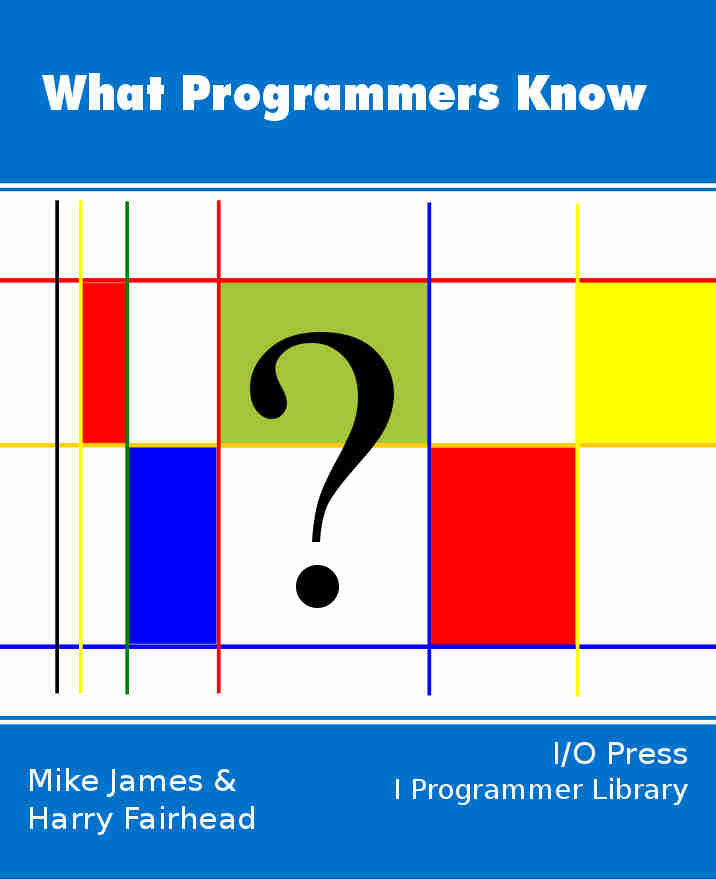| Hexadecimal |
| Written by Harry Fairhead | |||||||
| Friday, 15 January 2021 | |||||||
Page 3 of 3
Hex for dataThe reasons for using hex to represent addresses seem understandable but why use it for data? The answer is that a single byte can store a number in the range 0 to 255 and this is often treated as a code for a displayable character. In this case the contents of a block of memory can be displayed as ASCII text which can be read, but if the memory is being used to store a program or some internally formatted data then displaying it as ASCII text produces nothing but a mess. The solution is to display each byte as a hex value. This is very neat because numbers in the range 0 to 255 correspond to 00 to FF in hex and so only two characters have to be allocated to each memory location in the display. (Compare this with the three needed if decimal is used!) The other advantage of using hex is that particular data patterns are easier to spot in hex. For example you often get runs of FF, 0F or other simple hex values. Machine code instructions and even ASCII codes are also easier to spot in hex and if a item of data turns out to be an address what could be better than to have it already in hex! Big-endian and little-endianThere is another useful feature of hex when used with addresses that allows the programmer to read a hex address when it is stored in a number of memory locations. For example, suppose you want to store the data E3F7, as part of a program say, in two memory locations 1000 and 1001. You can do this without any need to resort to arithmetic by storing E3 in one location and F7 in other. When the memory locations are put together then contents of the `high order byte' is placed in front of the contents of the low order byte to give the full address, E3F7. If the address had been written in decimal then things would be much more complicated. For example, to store the address 1234 using two locations you have to split it up into a high and low byte:
which means that in decimal the high byte stores 4 and the low byte stores 210, which taken together look nothing like 1234. It is much easier to work with hex because the splitting into high and low order bytes is just a matter of dividing up the hex digits two at a time. This story would be complete and simple apart from the fact that the early computer chip makers, Intel, IBM, Motorola and Dec, couldn't agree on which order to store the bytes in. In the case of Motorola and DEC the high order byte is always stored first. This is generally called Big-endian - decreasing numerical significance as the address increases or the big value first. This means that in a memory listing you can read hex addresses from right to left. For example:
can be read as two addresses, AF34 and FF39. Unfortunately Intel and IBM store their addresses the other way around - that is, low order byte first. This is generally called Little-endian - increasing numerical significance as the address increases or little value first. This means that in a simple memory dump the pairs of hex digits that form the addresses are reversed. For example,
in an Intel machine corresponds to the two addresses 34AF and 39FF. If you swap between machines, especially any processor derived from the 68000 and the 80x86 family then you should watch out for this difference or risk getting your addresses in a twist. The same problem arises when transmitting bytes or bits even down a serial communication line - do you send the high byte or the low byte first. You always need to check which order the bits are in. The internet generally uses bigendian.
|
Data Structures Part II - Stacks And Trees Part II of our look at data takes us into more sophisticated structures that are fundamental to computing - stacks, queues, deques and trees. If you don't know about these four then you are goin [ ... ] |
Bus Basics Buses are everywhere and yes when you are looking for one they tend to come in threes! With that joke out of the way, let’s take a look at what a bus is in general and in particular. |
| Other Articles |
<ASIN:0471732788>
<ASIN:0780334264>
<ASIN:0070650500>
<ASIN:1856175073>



